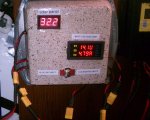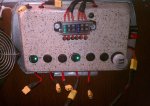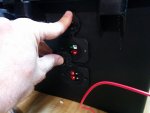ab1985
Explorer
Like several others I am in need of a portable solar system for my vehicle, but I don't like the size and weight of the suitcase-style units available for purchase. I've pieced together most of my DIY setup, but I have couple of questions on the last few bits.
My planned setup:
- HQST 100W flexible solar panel. My plan is to store this in the bedding of my pop-top when not in use. http://www.amazon.com/HQST-Monocrys...&redirect=true&ref_=oh_aui_detailpage_o00_s00
- Renogy 10 Amp PWM control charger. Honestly, I looked at so many I finally just pulled the trigger on this one to get started. I may change it out at some point if I find out it's not the best for my application: http://www.amazon.com/Renogy-Amp-So...&redirect=true&ref_=oh_aui_detailpage_o08_s00
- Makerfire power analyzer: http://www.amazon.com/Makerfire®-Pr...&redirect=true&ref_=oh_aui_detailpage_o08_s00
I don't want anything hard mounted, so I bought a small, waterproof tackle box to house the charge controller, power analyzer and assorted cables (pics below). The dimensions on the box were intentional. I wanted something low profile that was just large enough to fit everything, and it's clear so I can see what's going on inside without having to open and close. I recently replaced my Coleman camp stove with a Tembo Tusk Skottel, so this box will fit the stove's old spot perfectly with room to spare (roughly 14 x 9 x 3).
I have 50' of 12 AWG wire with MC4 ends that I will cut in half to make a 25' cable so the panel can be setup away from the truck in the sun (I think I would have been fine with plain old 12 AWG wire - read on). I plan to drill holes in the end of the tackle box to run SAE connections to/from the charge controller so everything is quick disconnect. Another expo member posted a great flanged SAE connector that would work perfectly for me, but it's only available in 12 AWG ( http://www.ebay.com/itm/SAE-flanged...-recreational-vehicle-portable-/391399826815? ). Reading other's recommendations here I planned to run 10 AWG from the controller to the battery where another SAE quick connect will be located, and unfortunately this bit is only available for a 12 AWG connection.
So my questions: 1) Would I be fine with 12 AWG between the controller and battery? That would make for a cleaner install. 2) Can I get rid of the MC4 ends all together and replace with SAE disconnects so I have them at both ends? 3) Anything glaringly obvious I am missing or thinking about incorrectly? I'm a solar newbie so advice/suggestions are welcome.
TIA
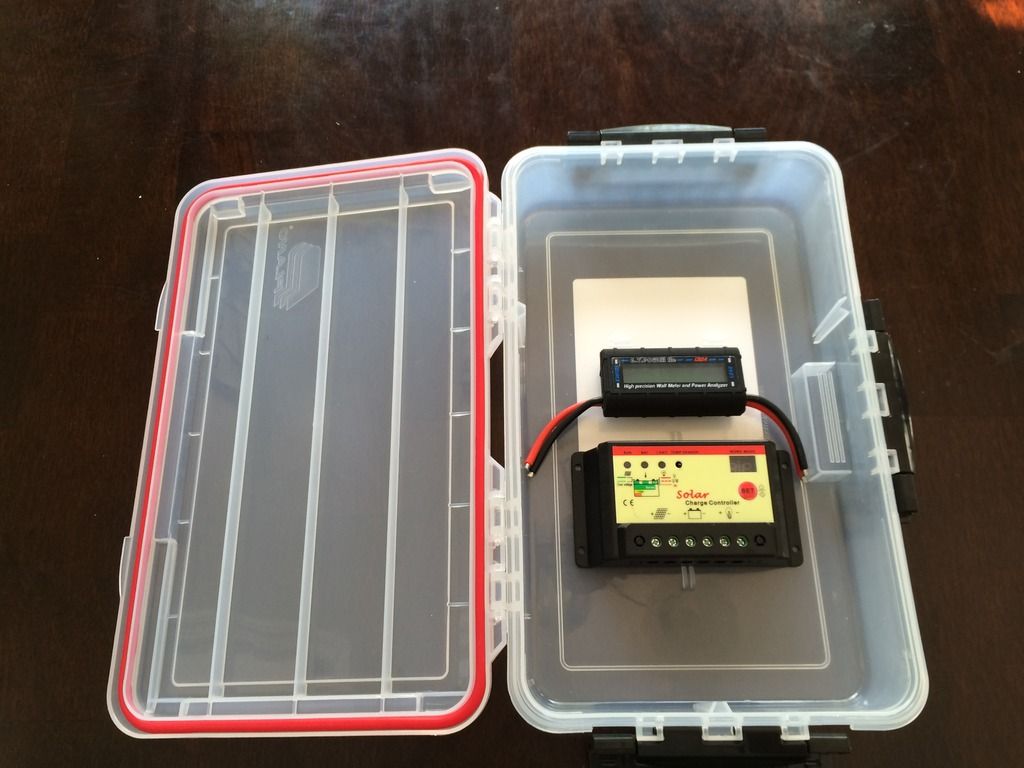
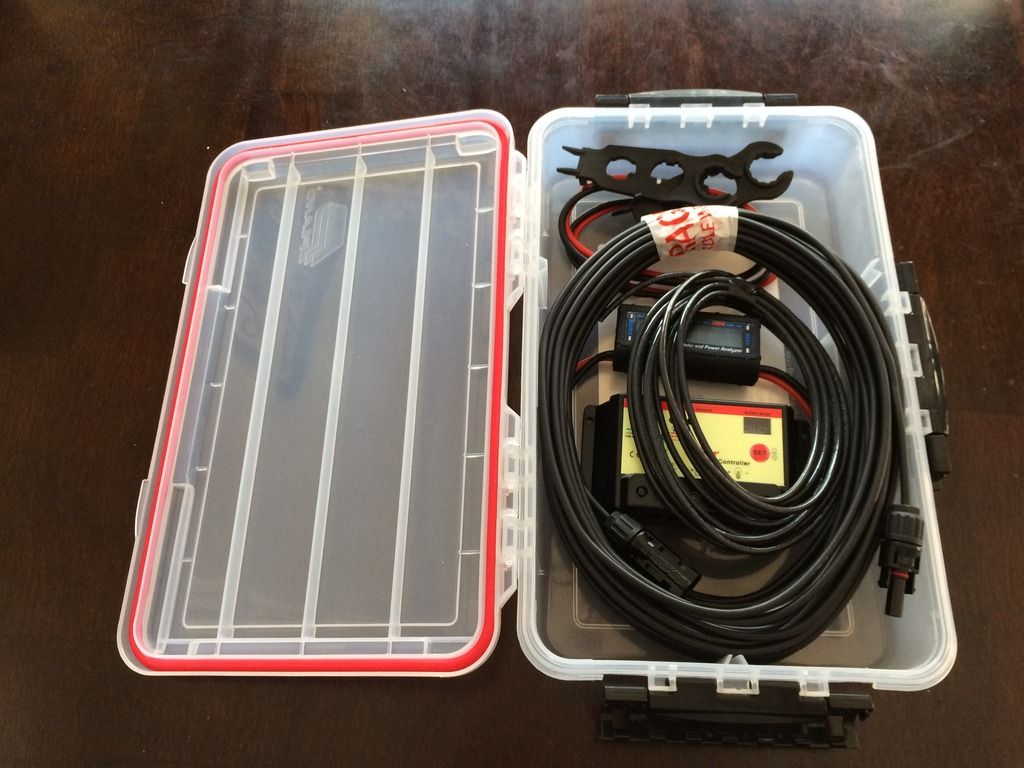
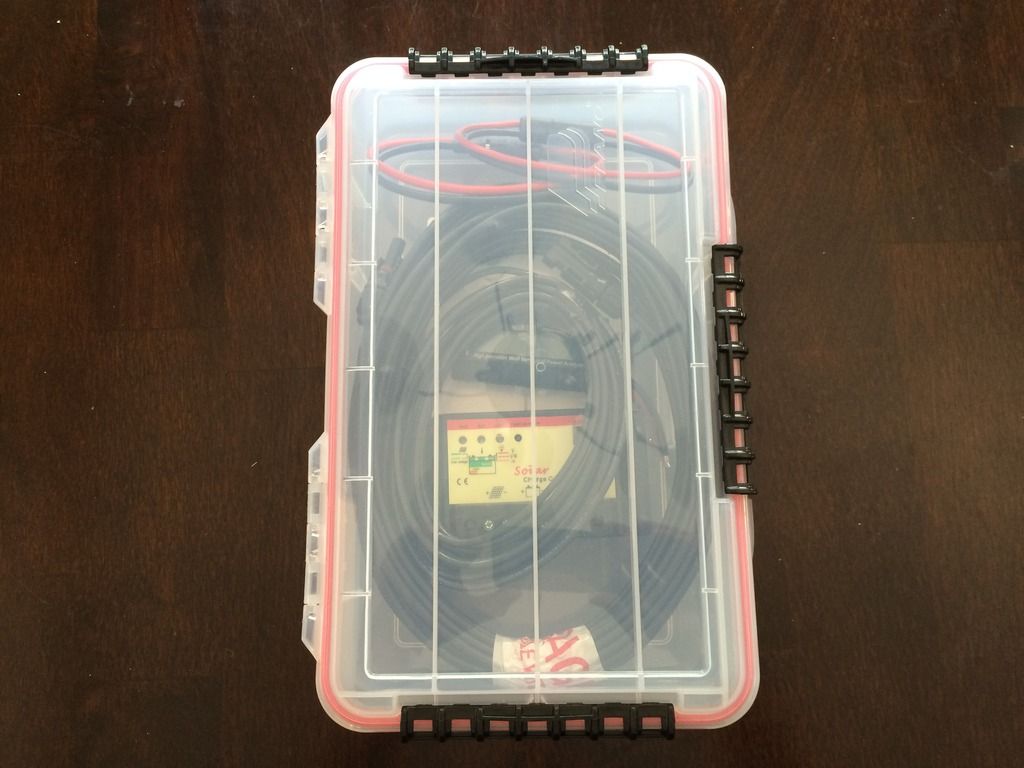
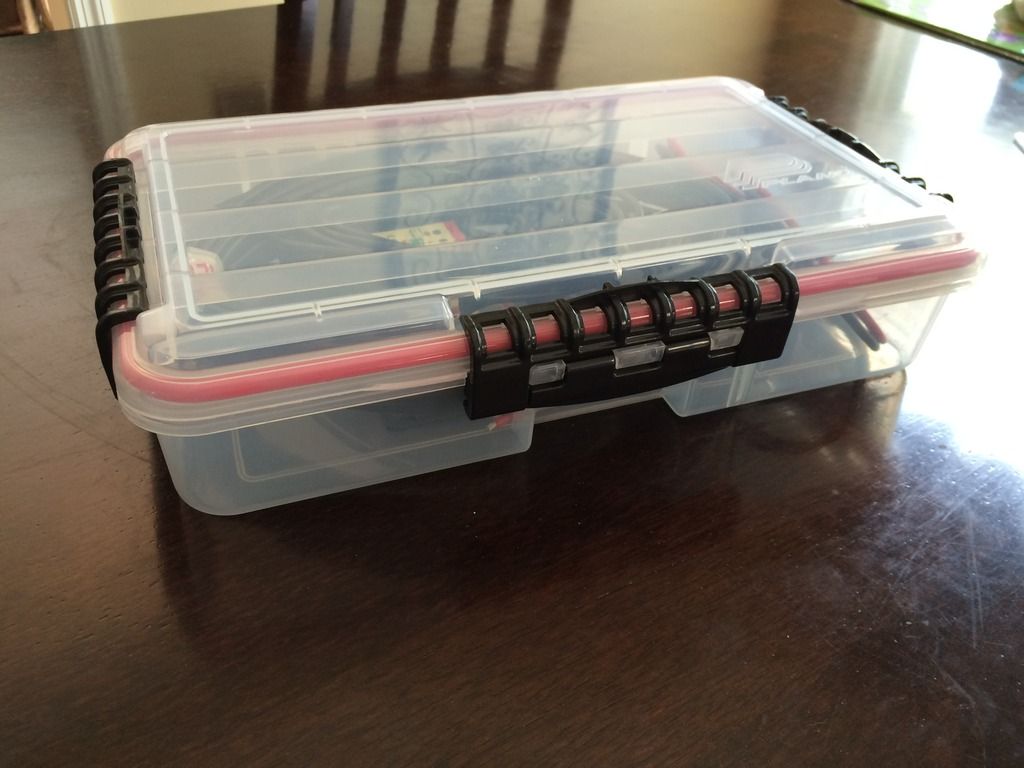
My planned setup:
- HQST 100W flexible solar panel. My plan is to store this in the bedding of my pop-top when not in use. http://www.amazon.com/HQST-Monocrys...&redirect=true&ref_=oh_aui_detailpage_o00_s00
- Renogy 10 Amp PWM control charger. Honestly, I looked at so many I finally just pulled the trigger on this one to get started. I may change it out at some point if I find out it's not the best for my application: http://www.amazon.com/Renogy-Amp-So...&redirect=true&ref_=oh_aui_detailpage_o08_s00
- Makerfire power analyzer: http://www.amazon.com/Makerfire®-Pr...&redirect=true&ref_=oh_aui_detailpage_o08_s00
I don't want anything hard mounted, so I bought a small, waterproof tackle box to house the charge controller, power analyzer and assorted cables (pics below). The dimensions on the box were intentional. I wanted something low profile that was just large enough to fit everything, and it's clear so I can see what's going on inside without having to open and close. I recently replaced my Coleman camp stove with a Tembo Tusk Skottel, so this box will fit the stove's old spot perfectly with room to spare (roughly 14 x 9 x 3).
I have 50' of 12 AWG wire with MC4 ends that I will cut in half to make a 25' cable so the panel can be setup away from the truck in the sun (I think I would have been fine with plain old 12 AWG wire - read on). I plan to drill holes in the end of the tackle box to run SAE connections to/from the charge controller so everything is quick disconnect. Another expo member posted a great flanged SAE connector that would work perfectly for me, but it's only available in 12 AWG ( http://www.ebay.com/itm/SAE-flanged...-recreational-vehicle-portable-/391399826815? ). Reading other's recommendations here I planned to run 10 AWG from the controller to the battery where another SAE quick connect will be located, and unfortunately this bit is only available for a 12 AWG connection.
So my questions: 1) Would I be fine with 12 AWG between the controller and battery? That would make for a cleaner install. 2) Can I get rid of the MC4 ends all together and replace with SAE disconnects so I have them at both ends? 3) Anything glaringly obvious I am missing or thinking about incorrectly? I'm a solar newbie so advice/suggestions are welcome.
TIA





